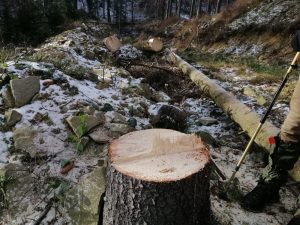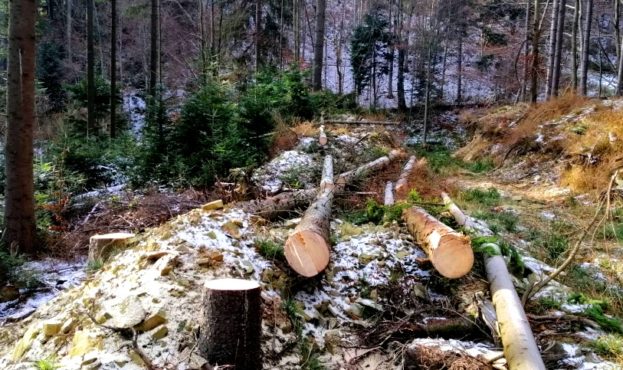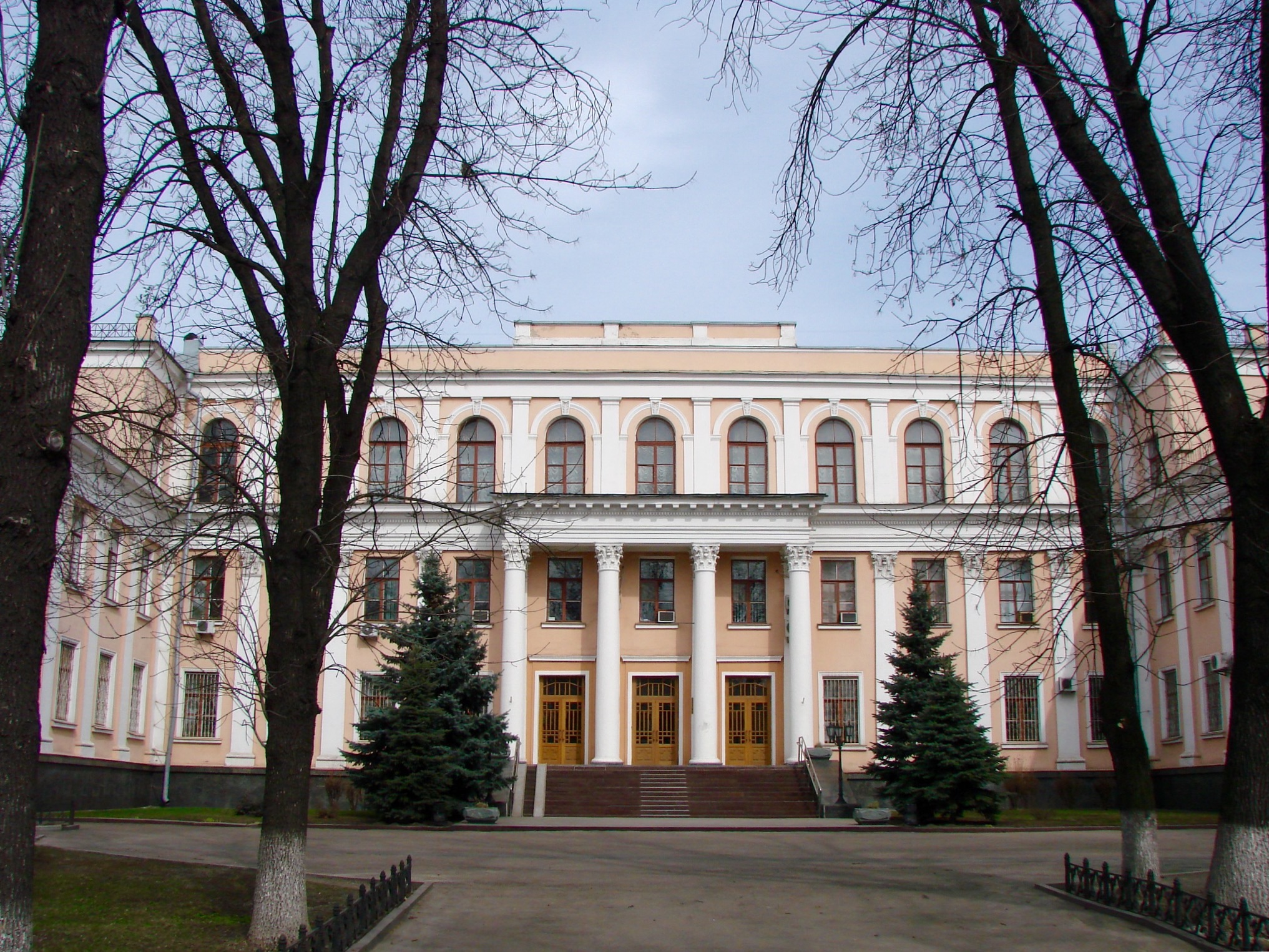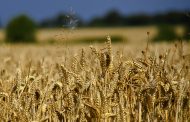Kiev. Ukraine. Ukraine Gate – February 03, 2021 – Agriculture
The State Environmental Inspectorate often covers illegal logging instead of combating it. How does this happen? About two recent examples from the most forested region of Ukraine – Zakarpattia.
Example one: illegal logging without ATS
Since the end of 2017, Ukraine has had an environmental impact assessment (EIA) procedure. Among other things, ATS is a necessary prerequisite for continuous and gradual felling of the main use and continuous sanitary felling of more than a hectare, as well as continuous sanitary felling of any area in protected forests.
In 2018, three forestries of Zakarpattia carried out large-scale continuous sanitary felling, the area of each of which was over a hectare. The Velykobychkivsky forestry has carried out at least 13.3 hectares of such felling (by the way, this fact is reflected in last year’s investigation and the British Earthsight, which concerns illegal logging and IKEA). Rakhiv Research Forestry illegally cut down more than 22 hectares. But the absolute leader is the Yasinyansky forestry – more than fifty hectares of illegal continuous sanitary fellings without ATS.
However, violating forestries tried their best to get out of the situation. In particular, it was claimed that the felling was carried out to eliminate the effects of the windstorm that occurred in September 2017. By the decision of the commission on technogenic-ecological safety and emergency situations of the Transcarpathian Regional State Administration (commission of TEB and NA) this windmill was recognized as an emergency situation. The main argument of foresters is the third article of the Law ” On Environmental Impact Assessment “, which states that ATS is not necessary for activities aimed at eliminating the consequences of emergencies.
That sounds good. But literally, the next line of this article clarifies that the list of activities that are not subject to ATS in case of emergency is established by the Cabinet of Ministers of Ukraine separately. And if you look at the resolution that regulates this issue, there are no sanitary fellings in the list of activities that are not subject to ATS. Continuous sanitary felling was completely illegal. But what about the environmental inspection?
The Ukrainian Environmental Protection Group sent information about the above-mentioned illegal logging to the State Coinspection in the Zakarpattia region in June 2020. In September of the same year, they received an answer that Article 3 of the Law did not require ATS for sanitary felling related to emergencies, so all felling was legal. Absolute legal ignorance…
In September of the same year, we sent a complaint to the central office of the State Coinspection against the actions of environmental inspectors of the Zakarpattia region. In October we get a similar answer: all felling is legal, everything is fine. Then we move through the bureaucratic circles of hell and send a new complaint, this time to the Ministry of Environmental Protection and Natural Resources (Ministry of Environment). We complain about the actions of the central office of the State Coinspection. And we get an even more enchanting answer.
The Ministry of Environment sent our complaint back to the State Coinspection. And they replied that their past answer was incorrect. This time, the management of the Ecological Inspectorate justifies the legality of sanitary felling by the fact that the decision of the commission on thermal power plants and emergencies dates back to September 2017, before the entry into force of the Law “On Environmental Impact Assessment”. That is, according to the central office of the State Coinspection, the decision of the commission on thermal power plants and emergency situations is the basis for logging!

Illegal Logging in Transcarpathia!
Anyone familiar with forest legislation knows that the decision of the TEB and the Emergency Commission does not apply to logging. A logging permit is a permit for sanitary felling. As a last resort – a list of measures to improve the sanitary condition of forests. However, it is definitely not a decision of a commission that is not provided by any forestry rules.
Such actions of the State Coinspection are a classic cover of illegal logging. Unfortunately, the law prohibits double inspections on the same subject. Foresters guilty of carrying out more than 80 hectares of illegal logging are unlikely to receive any punishment. Because eco-inspectors of the Zakarpattia region cover foresters and the management of the State Coinspection covers their eco-inspectors.
Example two: illegal sanitary felling of natural forests
In recent years, there have not been many changes in legislation that have really had a positive impact on the preservation of Ukrainian forests. One such example is the Cabinet of Ministers Resolution 1224, which significantly limited various types of felling in the most valuable forests of the Carpathians. Among other things, it was a ban on continuous sanitary felling in natural forests, classified as a protective category. It would seem that the norm of the legislation is also quite unambiguous.
On December 14, 2020, the Rakhiv Forestry issued a logging ticket for continuous sanitary felling in Bilotysyansky Forestry (quarter-allotment 26-52). In the documents, this area is listed as being located at an altitude of 1180 meters above sea level. The afforestation plans state that the trees are of natural origin, ie they were not planted by humans. According to the new rules, continuous sanitary felling is prohibited here.
But there is no equal in the desire to cover any illegal logging of the eco-inspection. In response to our request for an inspection, the State Coinspection in the Zakarpattia region states that the origin of the stand on the site is “impossible to establish.” And the natural origin is clearly recorded in the forest management materials. Again, the State Coinspection no longer has grounds to re-inspect, so Rakhiv foresters again manage to carry out illegal logging without any penalties.
This example is not unique. During December-January, a number of other Carpathian forestries also issued logging tickets for continuous sanitary felling, which violates the new legal requirements. Among them are Vyhodsky and Nadvirnyansky forestries in the Ivano-Frankivsk region. We hope that in the case of these forestries the actions of environmental inspectors will be more adequate.
Conclusions: disappointing
Unfortunately, the above examples of inadequate work of the State Coinspection are not unique. We have already had a similar experience, for example, with the Savran forestry in the Odesa region. And not only us. In November last year, WWF experts in Ukraine faced a situation where environmental inspectors were not very interested in detecting violations.
The current head of the State Coinspection, Andriy Malovany, was appointed in May 2020. Since then, no significant changes have taken place in the work of the eco-inspection. Moreover, just now the leadership of the State Coinspection is covering the obvious shortcomings in the work of Transcarpathian environmental inspectors, who in turn cover illegal logging. The consequences of such an algorithm can be seen with the naked eye.
What to do with it? Of course, to reform. Unfortunately, neither the bill on the reform of environmental control nor the idea to increase funding for the State Coinspection, do not receive practical implementation. Meanwhile, illegal logging continues to be extremely common. And not only in the Carpathians.
READ ALSO:Developing Artificial Intelligence to Distinguish Between Tree Species!







